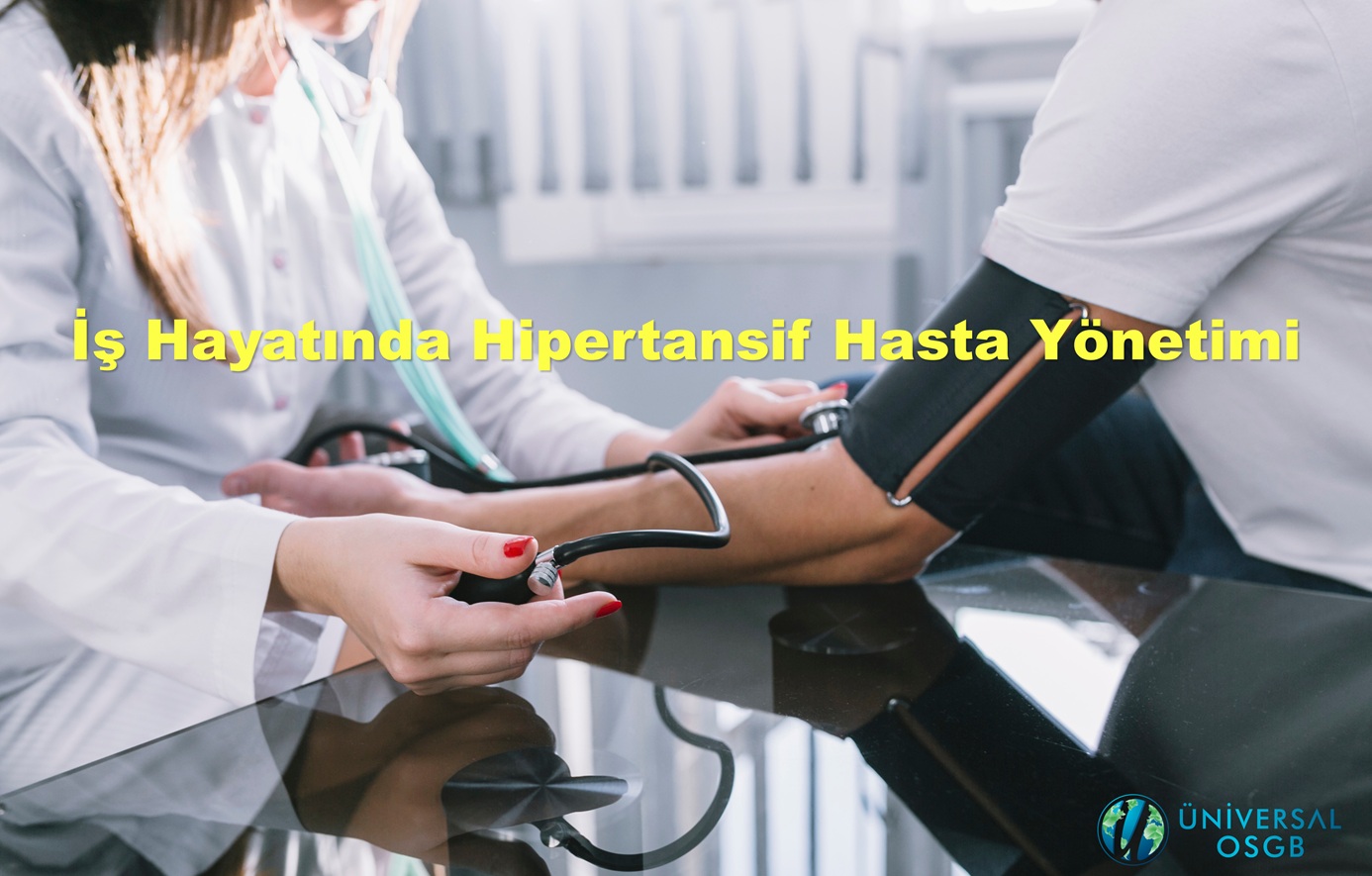
Hypertension: Definition, Treatment Approaches, and Management of Hypertensive Patients in the Workplace
Hypertension: Definition, Treatment Approaches, and Management of Hypertensive Patients in the Workplace
Hypertension is one of the most common chronic diseases worldwide and ranks among the leading causes of cardiovascular morbidity and mortality. According to World Health Organization (WHO) data, approximately one-third of the adult population has been diagnosed with hypertension. Being a silent disease, it often leads to delays in diagnosis and treatment, which can result in serious complications such as stroke, heart attack, and kidney failure. In the workplace, hypertension is a critical risk factor for both individual health and occupational health and safety.
What is Hypertension?
Hypertension is a condition in which arterial blood pressure is above normal limits. Clinically:
- Systolic Blood Pressure ≥ 140 mmHg
- Diastolic Blood Pressure ≥ 90 mmHg
Repeated measurements of these values are sufficient for a diagnosis of hypertension.
Classification of Hypertension
Stage 1: 140–159 / 90–99 mmHg
Stage 2: 160–179 / 100–109 mmHg
Stage 3 (Severe): ≥ 180 / ≥ 110 mmHg
Isolated Systolic Hypertension: Systolic ≥ 140, Diastolic < 90 mmHg
Treatment Methods for Hypertension
The goal of hypertension treatment is to prevent complications by lowering blood pressure to target values.
- Lifestyle Changes
- Reducing salt intake (less than 5 grams per day)
- Regular physical activity (at least 150 minutes per week)
- Healthy diet (DASH diet, Mediterranean diet)
- Reducing tobacco and alcohol consumption
- Stress management and sleep patterns
- Pharmacological Treatment
- DiureticsACE inhibitors / ARBs
- Calcium channel blockers
- Beta blockers
The choice of medication is determined based on the patient's additional diseases (diabetes, kidney failure, heart failure, etc.) and age.
Managing Hypertension in the Workplace
Importance in Terms of Occupational Health
Hypertension poses risks such as workforce loss, sudden health problems (stroke, heart attack), occupational accidents, and reduced productivity. The risk of hypertension is particularly higher among employees working in stressful, shift-based, and high-intensity jobs.
Pre-Employment and Periodic Examinations
- Blood pressure measurement should be conducted during pre-employment medical examinations.
- Regular monitoring should be included in periodic health assessments.
- Employees at risk of hypertension should be identified at an early stage.
Preventive Approaches in the Workplace
- Ergonomic adjustments: Working conditions that promote physical activity.
- Nutritional support: Salt-free and healthy meal options.
- Psychosocial support: Stress management programs, balanced workload distribution.
- Encouragement of physical activity: Walking breaks and sports activities for employees.
Management of Hypertensive Employees
- Workplace first aid teams should be trained in hypertensive crisis management.
- Employees with hypertension should take their medications regularly.
- Working hours should be planned considering excessive stress and shift schedules.
- For high-risk tasks (high-pressure environments, heavy machinery, night shifts), the suitability of hypertensive individuals should be evaluated by a physician.
Hypertension is a chronic disease that can be controlled with early diagnosis and effective treatment, but can lead to serious complications if neglected. Managing hypertension in the workplace affects not only individual health but also occupational safety and productivity. Therefore, it should be addressed holistically by workplace physicians, occupational health professionals, and managers, combining lifestyle changes, medical treatment, and workplace arrangements.
Hypertension is one of the leading causes of cardiovascular mortality and morbidity worldwide. Diagnosis is usually made when systolic blood pressure is ≥140 mmHg or diastolic blood pressure is ≥90 mmHg. Treatment includes lifestyle modifications and pharmacological approaches. Managing hypertension in working life is critical not only for individual health but also for occupational health and safety. This article discusses the definition, treatment methods, and current information on the management of hypertensive employees in the workplace.
Hypertension, affecting approximately one-third of the adult population, is often referred to as the “silent killer” (WHO, 2023). It can progress for a long time without symptoms, and if left untreated, may lead to complications such as cardiovascular diseases, stroke, and kidney failure (Whelton et al., 2018). In the workplace, hypertension should be considered within the scope of occupational health and safety, as it may cause occupational accidents, workforce loss, and reduced productivity.
References
- World Health Organization (WHO). (2023). Hypertension. Retrieved from https://www.who.int
- Whelton, P. K., Carey, R. M., Aronow, W. S., et al. (2018). 2017 ACC/AHA/AAPA/ABC/ACPM/AGS/APhA/ASH/ASPC/NMA/PCNA guideline for the prevention, detection, evaluation, and management of high blood pressure in adults. Journal of the American College of Cardiology, 71(19), e127–e248.
- Williams, B., Mancia, G., Spiering, W., et al. (2018). 2018 ESC/ESH Guidelines for the management of arterial hypertension. European Heart Journal, 39(33), 3021–3104.
- Carey, R. M., Muntner, P., Bosworth, H. B., & Whelton, P. K. (2018). Prevention and control of hypertension. JACC: Heart Failure, 6(7), 604–614.
- Sabbah, W., Mortensen, L. H., & Sheiham, A. (2021). Stress, work and hypertension: A review of epidemiological evidence. Public Health, 198, 125–132.
- Republic of Turkey, Ministry of Labor and Social Security. (2020). Occupational Health and Safety Practices Guide. Ankara.
For more information, please contact us.
Üniversal OSGB
Occupational Safety and Worker Health Center


